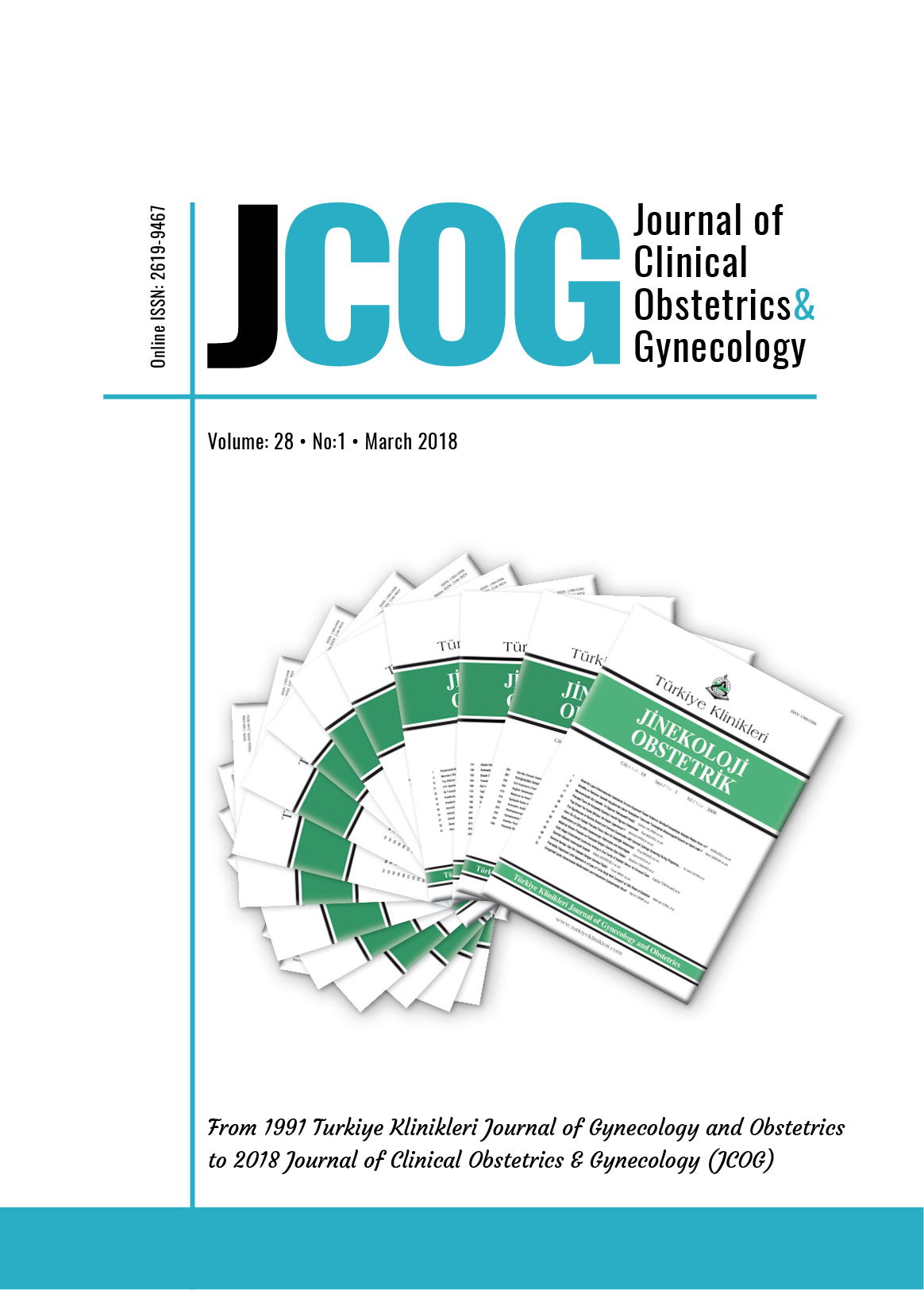Open Access
Peer Reviewed
ORIGINAL RESEARCH
2627 Viewed1751 Downloaded
Comparison of Ultrasound-Guided Drainage with Other Available Treatment Modalities for, Treatment of Tubo-Ovarian Abscess
J Clin Obstet Gynecol. 2018;28(1):1-8
DOI: 10.5336/jcog.2017-59367
Article Language: EN
Article Language: EN
Copyright Ⓒ 2025 by Türkiye Klinikleri. This is an open access article under the CC BY-NC-ND license (http://creativecommons.org/licenses/by-nc-nd/4.0/)
ABSTRACT
Objective: The present study aimed at the retrospective evaluation of the medical records of patients treated for tubo-ovarian abscess (TOA) at our clinic and investigation of the efficacy of USG-guided drainage compared with that of other available treatment modalities. Material and Methods: Medical records of 100 patients with TOA, who were treated and followed up at the Department of Gynecology and Obstetrics, School of Medicine, Dicle University between January 2009 and April 2015, were reviewed retrospectively. Details such as demographic data, risk factors, clinical and laboratory findings, treatment modalities used, and complications observed were recorded for each patient. Results: The mean age of the patients was 36.46±11.6 years. Of the 100 patients, 10 were menopausal women. Pelvic pain was the most common complaint in all patients (100%). The history of intrauterine or intra-abdominal intervention within six months was the most common risk factor (60.5% patients) for the development of TOA. Of the patients, 25% reported fever (≥38 °C), 55% had leukocytosis, 85% had high sedimentation rate, and 92% had high CRP levels. The development of leukocytosis was not observed to be associated with the treatment modality used (p > 0.05). Of the patients, 38% underwent only medical treatment, 47% underwent medical treatment followed by surgery, and 15% underwent medical treatment followed by USGguided drainage. All 34 (72.3%) patients who had undergone surgical treatment required fertilitypreserving surgery. Intraoperative bowel injury (6.3% patients) and wound site infection (8.5% patients) were among the common complications reported in patients undergoing surgical treatment. The mean duration of hospital stay was 7.9¡À6 days. The longest mean duration of hospital stay (10.5±3.9 days) was observed in the patients who had undergone USG-guided drainage. Conclusion: Broad-spectrum antibiotic therapy, the first step of treatment in patients with TOA, increases the size of abscess. In addition, a significant number of patients with bilateral abscesses require additional intervention (surgery). Our findings suggest that USG-guided drainage should be considered only in patients not responding to medical treatment and not consenting to undergo surgical treatment.
Objective: The present study aimed at the retrospective evaluation of the medical records of patients treated for tubo-ovarian abscess (TOA) at our clinic and investigation of the efficacy of USG-guided drainage compared with that of other available treatment modalities. Material and Methods: Medical records of 100 patients with TOA, who were treated and followed up at the Department of Gynecology and Obstetrics, School of Medicine, Dicle University between January 2009 and April 2015, were reviewed retrospectively. Details such as demographic data, risk factors, clinical and laboratory findings, treatment modalities used, and complications observed were recorded for each patient. Results: The mean age of the patients was 36.46±11.6 years. Of the 100 patients, 10 were menopausal women. Pelvic pain was the most common complaint in all patients (100%). The history of intrauterine or intra-abdominal intervention within six months was the most common risk factor (60.5% patients) for the development of TOA. Of the patients, 25% reported fever (≥38 °C), 55% had leukocytosis, 85% had high sedimentation rate, and 92% had high CRP levels. The development of leukocytosis was not observed to be associated with the treatment modality used (p > 0.05). Of the patients, 38% underwent only medical treatment, 47% underwent medical treatment followed by surgery, and 15% underwent medical treatment followed by USGguided drainage. All 34 (72.3%) patients who had undergone surgical treatment required fertilitypreserving surgery. Intraoperative bowel injury (6.3% patients) and wound site infection (8.5% patients) were among the common complications reported in patients undergoing surgical treatment. The mean duration of hospital stay was 7.9¡À6 days. The longest mean duration of hospital stay (10.5±3.9 days) was observed in the patients who had undergone USG-guided drainage. Conclusion: Broad-spectrum antibiotic therapy, the first step of treatment in patients with TOA, increases the size of abscess. In addition, a significant number of patients with bilateral abscesses require additional intervention (surgery). Our findings suggest that USG-guided drainage should be considered only in patients not responding to medical treatment and not consenting to undergo surgical treatment.
MENU
POPULAR ARTICLES
MOST DOWNLOADED ARTICLES





This journal is licensed under a Creative Commons Attribution-NonCommercial-NoDerivatives 4.0 International License.










